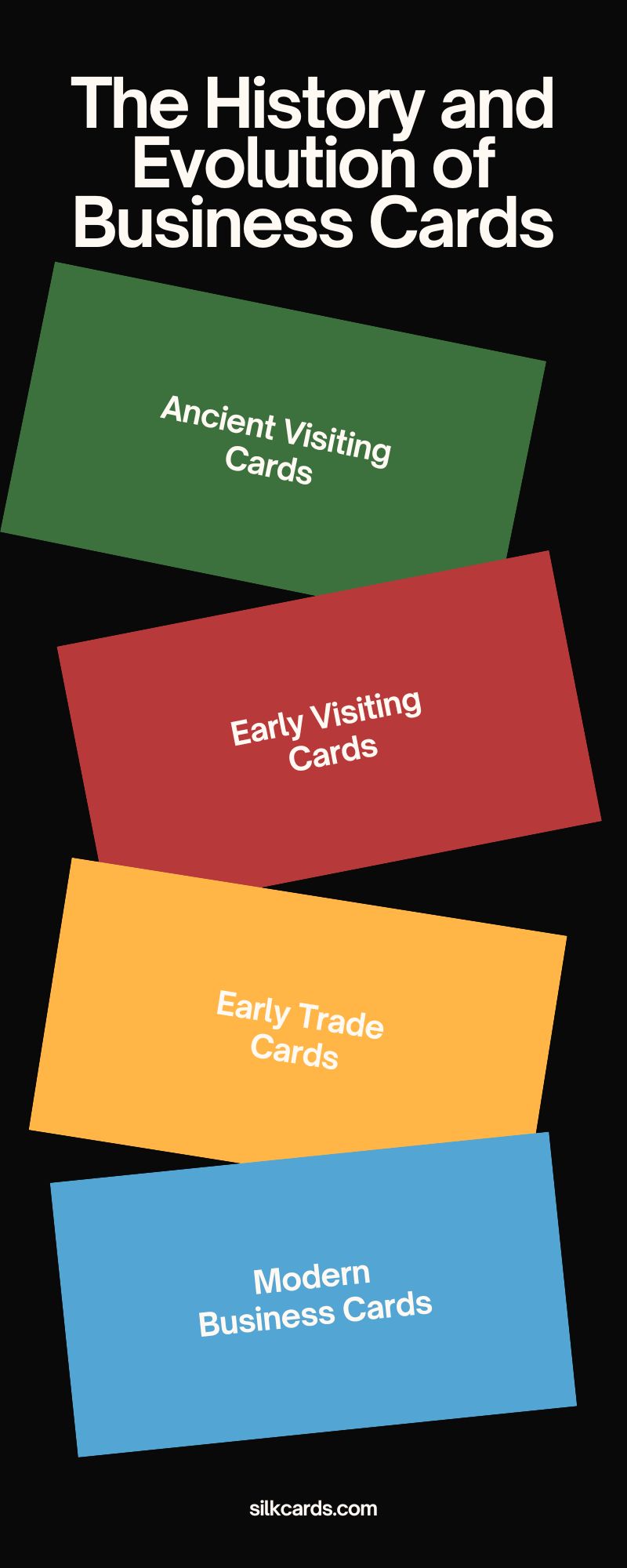Today, almost every working professional carries a business card with them. Whether you’re developing a side hustle, climbing the ladder until you’re the CEO, or working somewhere in between, people like to have a way to proclaim who they are and what they do. Business cards have helped people do that for hundreds of years, although we’ve used them differently throughout history. Keep reading to learn about the history and evolution of business cards.
Ancient Visiting Cards
The earliest known form of visiting or calling cards were ceramic tiles ancient Egyptians left behind in temples. These tiles depicted their name and title. While ancient Egyptians did use paper, it was expensive to produce and mostly used by the upper class, so people preferred tiles at the time.
Early Visiting Cards
Our first knowledge of modern visiting cards comes from 15th century China, when people carried cards containing personal and interesting information. Aristocrats usually carried these cards, as it was only upper classes who could afford to send a servant or messenger with their card, signaling that they wanted to meet with someone.
As trade and communication between continents improved, European upper classes learned about these visiting cards and began using them for their own purposes in the 17th century. They decorated the cards as they saw fit, sometimes using gold and fancy calligraphy to further show off their status and importance. These cards were the first impression many of these people made in various relationships, from romantic courtships to business deals, so their cards had to look just right.
Roughly 100 years later, every eligible young lady of status carried a card with her when she went visiting, either to the house of another woman or a potential suitor. Servants in these well-to-do households would offer a card tray when the lady entered the house, and she would lay her card on this tray. They would then take this card to the head of the household, announcing the arrival of the lady. Men of various ages also carried these cards and continued to use them for both personal and business reasons.
Early Trade Cards
Working men often did not carry fancy visiting cards, but they still needed a way to introduce themselves and their business and share information in case a client needed them later. In the 19th century, social visiting cards transformed into trading cards for the working classes. Depending on the role of the man within the workplace, he would have a card with his personal information and the business information on it, or just the business information. The back sides of these cards were often blank so that givers could write directions to the place of the business for the recipients, since formal addresses were uncommon. Wealthier businesses could even afford to print a map on the backs of these cards so that recipients could easily find their way to the store if necessary.
These trade cards were primarily used in cities. Smaller towns, where most people knew each other and their lines of work, saw no need for trade cards, as they already knew the necessary business information and directions.
Modern Business Cards
The Industrial Revolutions, which started in Europe in the 18th and 19th centuries, began breaking down some of the class distinctions and drove many people from small towns into big cities. This breakdown of class distinctions meant that visiting and trade cards belonged to everyone, not just the elite. Since more and more people from small towns moved to unfamiliar big cities for work, cards became a necessary way to get information.
It was during this time that trade and business cards began to meld into what we now recognize as the modern-day business card. People from all walks of life could commission them and hand them out, not just the elite. While some people still use them in social situations so that names and phone numbers couldn’t be lost, they’re called business cards for a reason. Work became one of the most important parts of peoples lives as they struggled with a revolution that changed how people made a living, so using cards for work became more important than using them for social reasons.
During these revolutions, many members of the upper classes were losing their position in society and no longer needed cards for strictly social reasons. As they began working with people from lower classes, the need for professional cards became more prominent. While working people from wealthy families no doubt kept their business cards fancier than working people with less wealth, they were still essentially using the same communication system.
Beyond Paper Cards
Other than those ancient Egyptian tiles, business cards have been made with paper throughout history. Paper is one of the most affordable materials, and since it’s lightweight, people could easily carry it around. However, our lives are not as conducive to paper cards any more. The pockets of our clothes are slimming down for slicker looks, and we carry more rough materials in our pockets and bags, like cell phones and keys. This has required the business card industry to make changes, such as offering business cards made from materials other than paper.
You can now find business cards made from plastic, wood, and metal. These hardier materials undergo similar printing processes but more customization that will help your business cards stand out, just like the gold scripts of early visiting cards. Custom printing is increasingly available for cards of all materials, so you can even include a map like those early trade cards if you want to.
The point of business cards now is to share your business information and make a great first impression. In this way, little has changed since early visiting cards. We continue to announce ourselves, what we do, and what we’re about every time we hand over these cards.
The history and evolution of business cards reminds us that there’s nothing new under the sun. We will always find inspiration somewhere and continue to develop that inspiration as time goes on. If you’ve been inspired by this incredible history, we offer business cards that you’ll love. Our cards are unique and designed to impress, just like your business!


